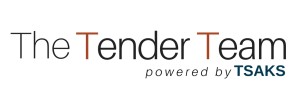Being involved in your first tender response can be daunting. Client expectations must be balanced with project (time) management in order to get your documents ready before the procuring company’s submission deadline.
Responding to the tender or bid
When starting your first tender response, it is most important to consult with the client to get started. In fact, it’s the only way to start your response. Your client will possess most of the answers available for your project but usually not in the most desirable format.
It’s likely that there will be a mess of documents delivered to your front doorstep or email inbox. The information present in those files will contain most of the answers required for your response but as it stands, it will likely not be presentable for the procuring team or selection panel to review.
The first set of documents you should review is the Invitation to Tender and Form of Tender.
The Invitation to Tender is the main document tender writers (such as those at The Tender Team) refer to when starting a client project. These documents detail the procurement company’s expectations and specific requirements that a tenderer must adhere to.
For example, only companies with a certain level of experienced key personnel and current working inventory may only be considered. These requirements are considered necessary by the procuring team as they are likely after the services of the ablest tenderers. Some tenderers are already primed to offer every product and service possibly required as their current capacities match or exceed procurement expectations. On the other hand, other tenderers may apply in order to achieve their first big break, propelling their company forward by purchasing supplies afterwards in order to meet the client’s demands.
Both situations can occur and the likelihood of either doing so results primarily in the original tender response to the procuring team’s criteria. While the Invitation to Tender should be considered an appropriate checklist and guide to follow, exceptions may apply that change the prospects of the successful tenderer not necessarily being the largest and able competitor.
The decision is ultimately up to the other side and it is the tender writer’s responsibility to put forth a proposal for submission that allays any concerns and offers as much as convenience and credibility as possible.
Pricing to win
The price level itself is usually not the tender writer’s responsibility. But they are charged with ensuring it is appropriately included in the final set of documents and verified with the pricing specialist responsible that no further price changes are required. The lowest price offered in the procurement process is an inviting feature of any submission but unless specified in the Invitation to Tender, it does not guarantee a successful bid.
The Invitation to Tender is usually a considerably large document specifying all relevant details that must be addressed. Procedural formalities such as submission location and adherence to general business ethics and confidentiality are always covered. The communication process between the tenderer and the procurement team is highly governed and can be somewhat restricted – as in limiting communication to email only. These procedures are in place to not give any competitor before the assessment of the submissions an undue advantage. It is also in place to cover the procurement team should they find themselves accused of corruption (bribery, etc) by the other competing bids.
This document also usually contains information on the evaluation process of the tender responses. As mentioned before, many procurement teams are not always looking for the cheapest provider. They may eschew the lowest cost solution for a more experienced one, implicitly demonstrating an assumed relationship between a higher price and better quality products and/or services. The tender writer needs to remember that pricing is only one component of tender writing and not the be all and end all factor that determines the successful bid.
The tender writer should always review the evaluation process for the tender response. This section of any Invitation to Tender will give the greatest insight into what criteria is being exactly assessed and the reasoning behind who will likely win. Many evaluation strategies assess a ‘value for money’ approach where it is always a combination of tender response characteristics such as affordable pricing, clearly stated capacity and experience levels and a captivating yet substantial response to alleviating the procurement team’s requirements.
If you’re ready to take the next step in securing new contracts for your business, call us here at the tender team on 0410 448 770 or email info@thetenderteam.com.au




